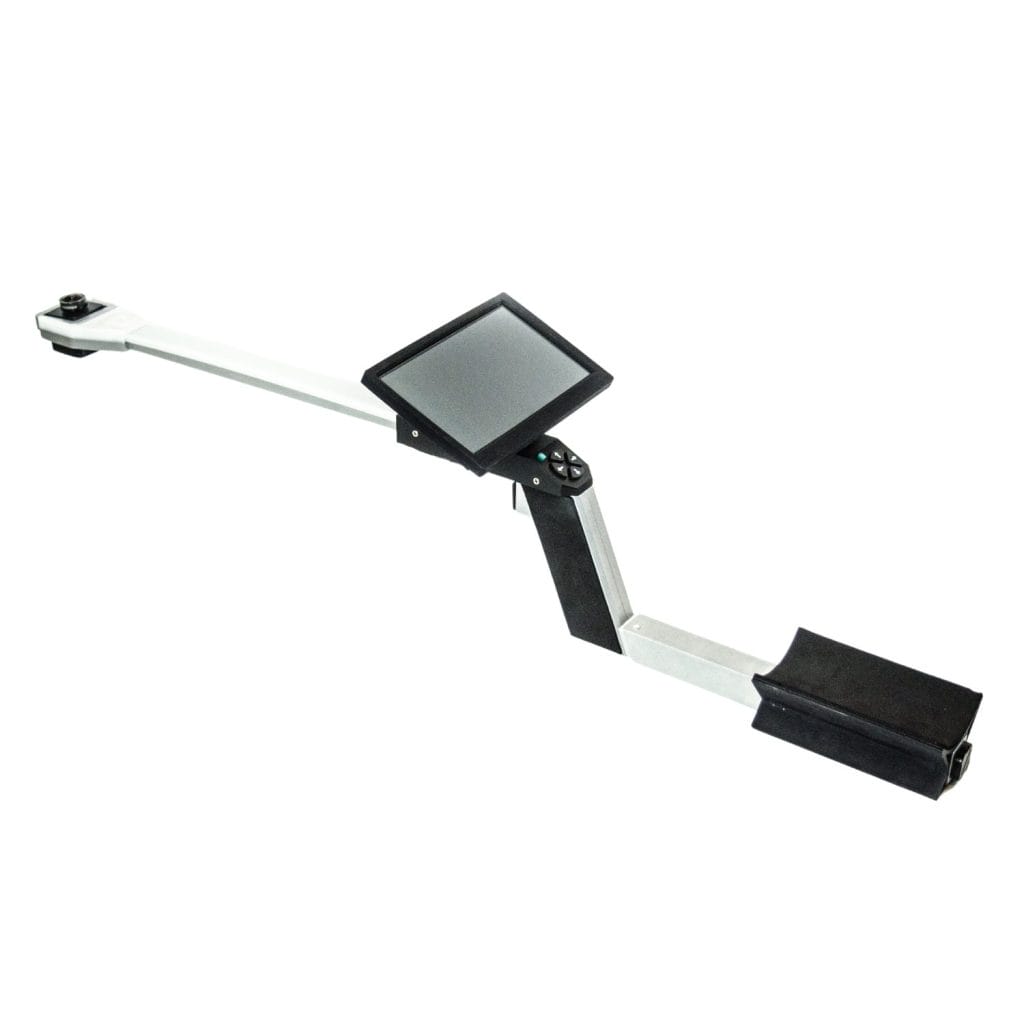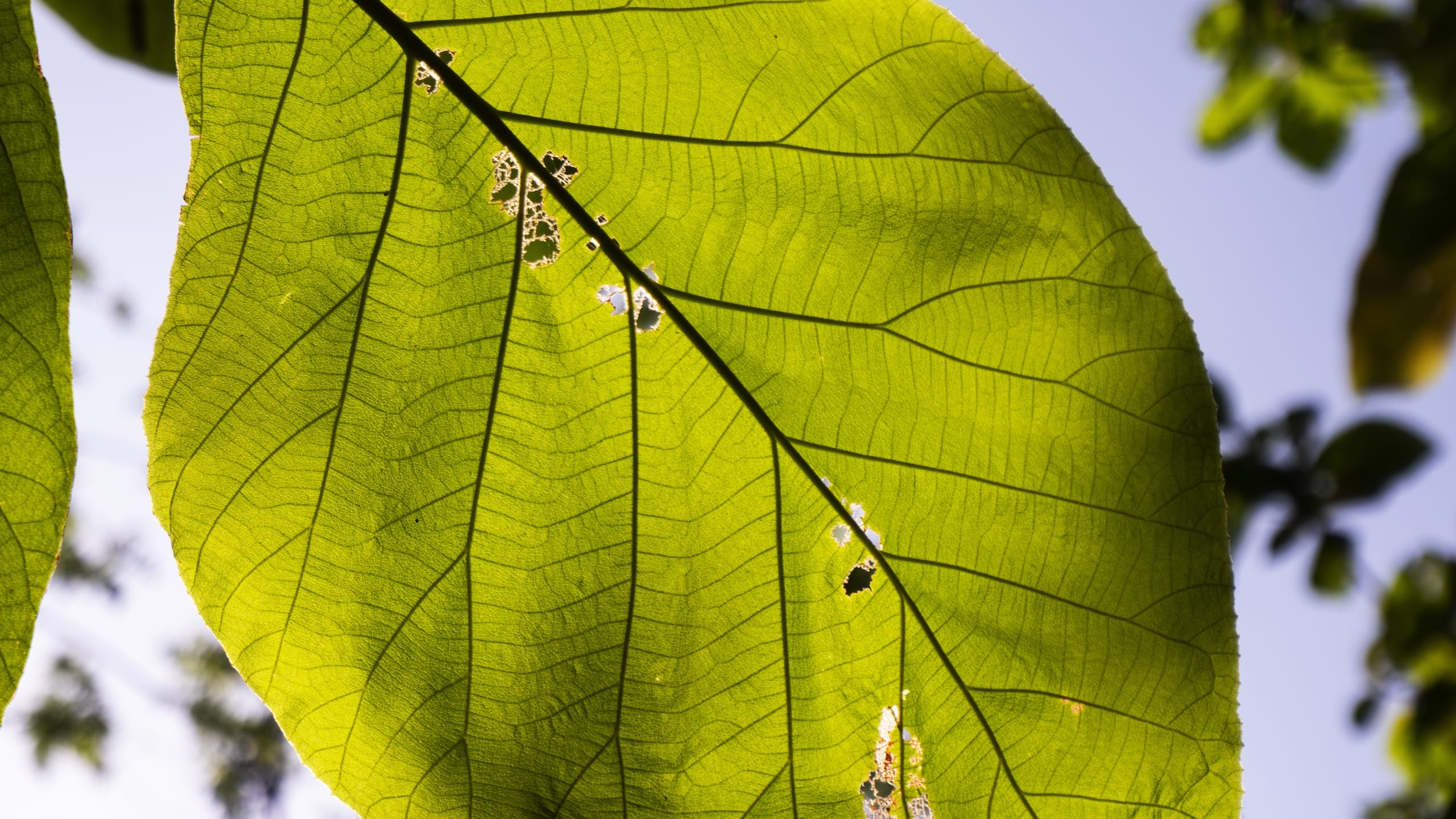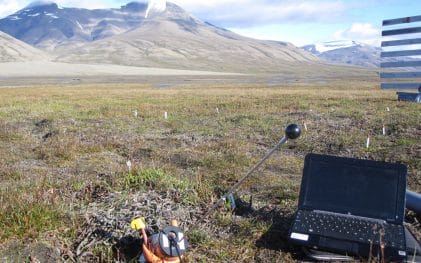November 18, 2025 at 6:00 pm | Updated November 18, 2025 at 6:00 pm | 4 min read
When it comes to understanding canopy structure and light distribution, precision matters. Researchers in forestry, agronomy, and ecology depend on accurate Leaf Area Index (LAI) data to model photosynthesis, evaluate growth, and manage ecosystems. Traditionally, devices like the LAI-2200C from LI-COR have dominated this space with hemispherical sensor arrays. CID Bio-Science’s CI-110 Plant Canopy Imager brings a modern, image-based approach that challenges the conventional method.
Measuring LAI: Two Different Philosophies
Both instruments aim to measure the same thing: Leaf Area Index. Their methods, however, are very different.
- The LAI-2200C uses multiple light sensors arranged in concentric rings to infer canopy structure based on light attenuation.
- It requires both above- and below-canopy readings to calculate LAI.
- The CI-110 captures wide-angle canopy images using a digital, self-leveling camera and instantly analyzes them for LAI, canopy gap fraction, leaf angle distribution, and extinction coefficients.
This difference defines the user experience. The LAI-2200C needs controlled lighting conditions, careful alignment, and post-processing. The CI-110 provides real-time visualization and analysis in the field. With its 150-degree fish-eye lens, touch-screen interface, and built-in processing, researchers can make decisions instantly instead of waiting for lab validation.
Subscribe to the CID Bio-Science Weekly article series.
By submitting this form, you are consenting to receive marketing emails from: . You can revoke your consent to receive emails at any time by using the SafeUnsubscribe® link, found at the bottom of every email. Emails are serviced by Constant Contact
The CI-110: Combining Optics and Intelligence

The CI-110 Plant Canopy Imager integrates hemispherical canopy photography with light measurement to non-destructively calculate LAI and other canopy parameters. It is equipped with 24 photodiodes that measure Photosynthetically Active Radiation (PAR) and calculate sunflecks, allowing simultaneous capture of light and image data.
Key benefits:
- Works under any sky condition
- No above-canopy reference readings required
- Self-leveling digital camera for consistent image capture
- Delayed trigger for crisp images
- Adjustable zenith and azimuth angles
- Multiple thresholding options such as the Otsu Method and Entropy Crossover Technique
These features help researchers adapt analysis to canopy density and light variability, offering flexibility beyond fixed-sensor approaches.
Limitations of Traditional Sensor-Based Systems
The LAI-2200C remains capable, but it depends heavily on diffuse light. That often limits use to dawn, dusk, or cloudy days. Bright sunlight or uneven illumination can distort readings, requiring corrections later.

It also needs above-canopy reference readings, which can be difficult in tall forests or uneven terrain.
By contrast, the CI-110 can operate at any time of day. Neutral density filters optimize exposure in bright light. Built-in GPS, Glonass, Beidou, and Galileo systems automatically tag data with precise coordinates, enhancing reliability.
Accuracy and Repeatability in the Field
Precision in canopy studies relies on context, not just sensor sensitivity. The CI-110 displays both the image and calculated data in the field, so users can confirm that the right area was analyzed and retake measurements immediately if needed.
This reduces error and improves data consistency.
The LAI-2200C, though accurate, requires careful manual orientation. Small deviations can affect results. The CI-110’s internal compass and self-leveling design automate alignment, improving repeatability.
Versatility Across Research Environments
The CI-110 performs well in varied environments:
- Dense forests
- Crop fields
- Greenhouses
Its adjustable lens accommodates different canopy heights and densities. Users can choose between image-based LAI measurements or PAR sensor-based evaluation. That dual approach provides two verification methods in one instrument.
The LAI-2200C is specialized for indirect LAI measurement but does not capture visual data. CID’s CI-110 combines imaging, light measurement, and GPS mapping in one portable platform.
User Experience and Data Workflow
The CI-110 features a 7-inch touchscreen for image capture, thresholding, and data export. Its intuitive interface makes field operation straightforward. Processed data are immediately available, reducing turnaround time for analysis.
The LAI-2200C often requires post-field analysis with proprietary software, adding extra time before results are ready.
A Clear Edge in Real-World Research
For researchers focused on precision, adaptability, and efficiency, the CI-110 Plant Canopy Imager stands out. Its design reflects CID Bio-Science’s commitment to usability and field-ready innovation.
The combination of imaging, GPS, and PAR sensing lets scientists gather richer, more contextual canopy data quickly. While both instruments deliver reliable results, the CI-110’s ability to function in all light conditions, skip reference readings, and display instant feedback gives it a practical advantage.
Conclusion
The CI-110 Plant Canopy Imager represents the next step in LAI measurement. It combines precise optics, fast data processing, and intuitive operation to outperform older sensor-based systems in both accuracy and convenience.
Researchers who want consistent, reliable canopy data without the constraints of traditional methods will find the CI-110 a strong choice.
Ready to improve your canopy research? Visit cid-inc.com or contact CID Bio-Science to request a demo today.
FAQs
1. Does the CI-110 require specific light conditions for measurements?
No. The CI-110 works under any daylight condition. Included neutral density filters and advanced imaging algorithms handle exposure automatically.
2. How does the CI-110 calculate LAI compared to traditional systems?
Instead of using light sensors, the CI-110 captures canopy images and analyzes them directly, providing instant LAI values without above-canopy readings.
3. Can the CI-110 integrate with other CID Bio-Science instruments?
Yes. The CI-110 works seamlessly with CID’s plant research tools, allowing users to combine canopy, spectral, and physiological data for complete analysis.
Related Products
Most Popular Articles
- Transpiration in Plants: Its Importance and Applications
- Leaf Area – How & Why Measuring Leaf Area…
- How to Analyze Photosynthesis in Plants: Methods and Tools
- Plant Respiration: Its Importance and Applications
- The Forest Canopy: Structure, Roles & Measurement
- Stomatal Conductance: Functions, Measurement, and…
- Forest & Plant Canopy Analysis – Tools…
- Root Respiration: Importance and Applications
- The Importance of Leaf Area Index (LAI) in…
- Irrigating with Saline or Seawater






